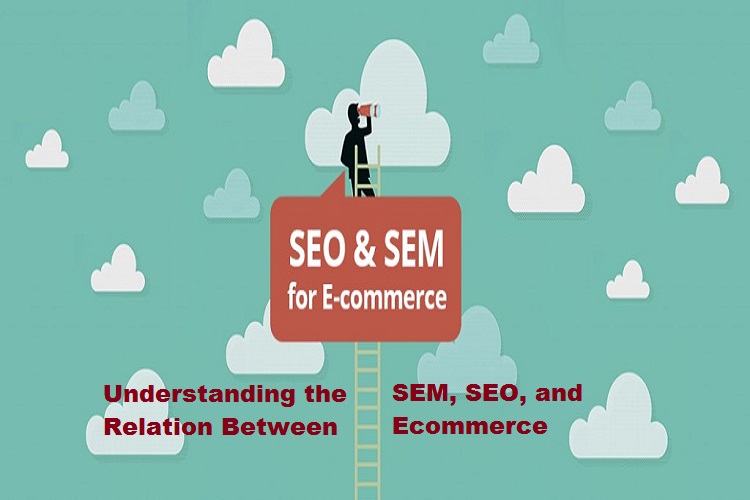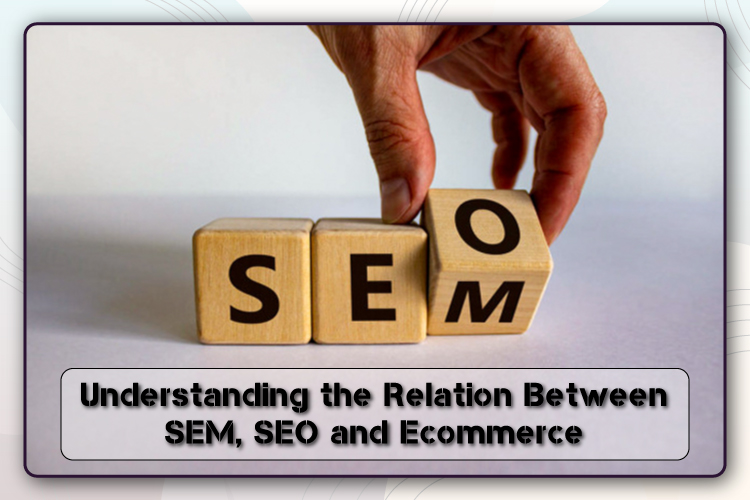
Running a business is no cakewalk. Every company has its unique needs and goals, and therefore they require their unique mixture of eCommerce, SEM, and SEO.
You might often find yourself asking questions like – what is the difference between SEO and SEM? Should I begin with SEM or SEO? Is eCommerce considered search? Or perhaps you are curious to know why you should bid on your own branded keywords?
Let’s try and understand the relationship between SEO, SEM, and eCommerce with an example. Suppose these three channels are games played on the same ground (SERPs) with the same ball (platforms), but the rules, pattern, the position of the players, goals to win, and variables are all different.
Now while a few players (viz. advertisers) put in everything they have into playing one game only, the real athletes (viz. performance marketers) who play a mix of these games and grasp the standard skill sets (such as data storytelling, powerful communication skills, embrace rapid change, keenness to test, etc.) will dominate the playground.
The search engine result pages are loaded with all types of listings and aspects that come under these three channels to compose the search marketing function. Let’s look at the three main benefits of having an all-inclusive search strategy:
- When working alongside each other, they occupy more real estate on the search results page for your company to possess and force out the competitors. Nevertheless, combined brands can acquire maximum visibility on SERPs.
- Often, the users are unaware of whether they are engaging with organic, paid, or eCommerce listings. And the ideal combination can imply that you’ll be there for your prospect where, when, and how they personally choose to connect with your business.
- No matter how disorganized the conversion path is today, having a combined search strategy will cover full-funnel bases and make sure you are reaching your prospects effectively, efficiently, and in a personalized way.
When it comes to finding out the right combination of SEM, SEO, and eCommerce efforts for your unique business, there is indeed no one-size-fits-all solution. From brand to advertisers, seasonality, categories – everything comes into play.
However, here is a breakdown of ‘what,’ ‘why,’ and ‘when’ of these three channels to guide the brands as they set out to build their own search combination.
SEO (SEARCH ENGINE OPTIMIZATION OR ORGANIC SEARCH OR LOCATION LISTING MANAGEMENT)
What?
Search engine optimization presents organic listings on the SERPs based on relevant search queries. It can be in the form of SEO listings, ratings or reviews, map listings, knowledge graphs, knowledge panels, etc. Some additional SEO areas are location listing management, web development, app search optimization, free shopping listings, content mapping, etc.
Pro Tip: Look into and grasp what umbrella terms such as “SEO” and “Reputation Management” really mean to businesses, what marketing issues they’re trying to resolve or what goals they’re hoping to accomplish.
Why?
SEO is like the primary foundation of our business online. Even the most impressive bungalows (viz. paid advertising) will collapse if their foundation is weak. Without having a robust SEO strategy and consistent, thoughtful, and smart messaging, you might not even know what’s out there for your business as the internet shares everything organically.
When?
All brands with a website need to have some involvement in SEO and work within organic listings to achieve brand goals and guidelines. For brick and mortar businesses, marketers should frequently update and optimize their location listings to improve their visibility in the SERPs. While this is a continuous process, it generally begins with an examination or opportunity analysis.
SEM (SEARCH ENGINE MARKETING OR PAID SEARCH OR PPC)
What?
Search engine marketing refers to paid ads generated by specific keyword searches. Whenever a user searches for a particular keyword, a real-time blind auction (a mix of the bid, ad relevance, and ad quality) takes place to position on the search results page with other advertisers participating in the same auction.
Why?
Paid search gives messaging as well as targeting control that serves at the top of the search engine result pages. If you are not taking part, your competitors are.
When?
Generally, marketers resort to paid search when they need an instant boost in their brand awareness, website traffic, and results. Substantial dollars drive the need for controlled promotional messaging and measurement of the campaign. To make the most out of SEM, marketers need to have a decent budget to spend on paid media.

ECOMMERCE OR SHOPPING ADS (FORMERLY KNOWN AS PRODUCT LISTING ADS)
What?
Ecommerce is essentially an umbrella term for online retail, including unpaid and paid aspects that work alongside each other, ranging from shopping ads on open marketplaces such as Amazon and on search engines to integrations such as Shopify.
Pro Tip: When it comes to eCommerce success, machine learning and automation are pivotal.
Why?
Ecommerce is crucial to driving online sales efficiently and effectively and helps maximize the impact on your business’s bottom line.
When?
In case you are an online product seller, the entry point itself is shopping ads on search engines. From there, whether your products are sold or not will be decided by the marketplaces, retailers, and supply chain.
Each brand will have its own needs and, therefore, require a unique mix of SEO, SEM, and eCommerce. Marketers will need to examine the company’s capabilities and goals to find out what programs are needed, how they’ll help the brand achieve those goals, and what data is necessary to do so.
When putting SEM, SEO, and eCommerce into practice, most businesses will have similar objectives, such as building a substantial presence on the SERPs. However, there’s abundant scope for creativity within these platforms for brands to accomplish their own goals. Marketers must remain focused on these goals throughout the campaign but also be quick as the industry evolves and reallocate the budget to other platforms if the desired outcomes aren’t achieved. Moreover, real-time tracking of results will allow the marketers to refocus their strategies swiftly to make sure the brand’s goals are fulfilled.
So now we know the relationship between these channels, their individual use cases, and their benefits. Let’s check out a few questions you can ask yourself to discover what actions you should take next to step up your search program game.
- What is my brand’s main goal?
- What pain points am I trying to resolve?
- Do I have the right partner who possesses the capabilities, tools, skills, expertise, and strength across multiple search channels?
WRAPPING IT UP
Marketers need to look at all channels holistically and execute strategic planning with an agile approach to modify for results. This will help drive excellence in your overall marketing program. While each of these channels has its unique part to play and benefit the advertisers differently, they should never be made to compete against one another or replace each other’s role in the marketing mix. Preferably they should be viewed complemental to each other and key to success.
Hariom Balhara is an inventive person who has been doing intensive research in particular topics and writing blogs and articles for E Global Soft Solutions. E Global Soft Solutions is a Digital Marketing, SEO, SMO, PPC and Web Development company that comes with massive experiences. We specialize in digital marketing, Web Designing and development, graphic design, and a lot more.




























